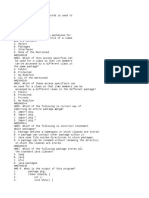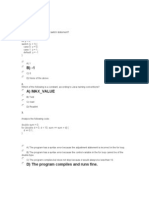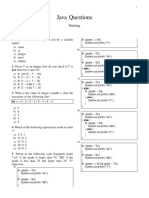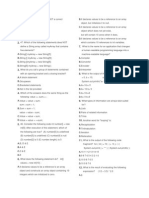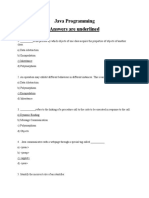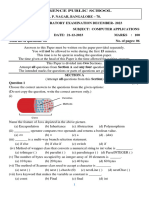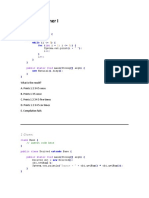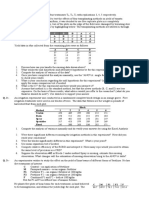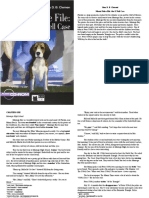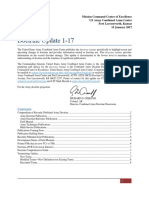0% found this document useful (0 votes)
33 views7 pagesSample Questions
The document provides a guide and sample questions for the EECS 1022 Final Exam, focusing on Java programming concepts and code tracing. It includes study tips and a series of sample questions that test understanding of Java code execution, error handling, and object-oriented principles. The questions cover topics such as class constructors, array manipulation, and method behavior in Java.
Uploaded by
xiejohn44Copyright
© © All Rights Reserved
We take content rights seriously. If you suspect this is your content, claim it here.
Available Formats
Download as PDF, TXT or read online on Scribd
0% found this document useful (0 votes)
33 views7 pagesSample Questions
The document provides a guide and sample questions for the EECS 1022 Final Exam, focusing on Java programming concepts and code tracing. It includes study tips and a series of sample questions that test understanding of Java code execution, error handling, and object-oriented principles. The questions cover topics such as class constructors, array manipulation, and method behavior in Java.
Uploaded by
xiejohn44Copyright
© © All Rights Reserved
We take content rights seriously. If you suspect this is your content, claim it here.
Available Formats
Download as PDF, TXT or read online on Scribd
/ 7





